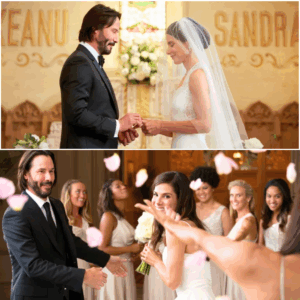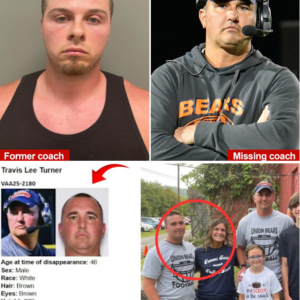“Adolescence” Netflix Series: A Bold Examination of Teenage Violence or an Overblown Stereotype of Modern Masculinity?

The Netflix original series Adolescence has taken the streaming world by storm since its release on March 13, 2025, becoming a lightning rod for both praise and criticism. The four-episode drama has sparked heated debates about the portrayal of teenage life, violence, and the influence of digital misogyny, with viewers and critics fiercely divided over its messaging and impact. Is it a necessary mirror to the chaos of modern youth, or is it an oversimplified depiction that perpetuates harmful stereotypes?
A Gripping Narrative of Teen Tragedy
At the heart of Adolescence is 13-year-old Jamie Miller, played by Owen Cooper, who stands accused of murdering a classmate in a high-profile school tragedy. The series takes us on an emotional rollercoaster, exploring Jamie’s troubled family life and the community’s response to the shocking crime. However, it’s not just about the murder itself. Adolescence digs deeper into the societal factors that shape Jamie’s troubled mind — from toxic online spaces to the influence of dangerous role models like Andrew Tate and the “manosphere.”
Critics have praised the series for its raw, unfiltered look at the harsh realities faced by today’s adolescents. It doesn’t shy away from depicting the ugly truths of growing up in a world dominated by social media, cyberbullying, and rampant misogyny. But the big question remains: Is the portrayal too one-sided, or is it the wake-up call we need?
Critics Rave, But Not Without Reservations
The series has been met with near-universal acclaim from critics. Metacritic awarded it a stellar 91/100, signaling widespread approval. The Guardian’s Lucy Mangan hailed it as “the closest thing to TV perfection in decades,” singling out the stellar performances of the cast, especially Cooper and co-star Emma Doherty.
However, while Adolescence has garnered praise for its unflinching storytelling, it hasn’t come without its fair share of controversy. One of the most contentious issues revolves around the portrayal of male characters. Critics argue that the show falls into the trap of depicting boys solely as violent, irredeemable products of toxic masculinity, shaped entirely by harmful online ideologies.
Kylie Lang of Courier Mail has expressed concerns that the series oversimplifies the complex factors at play in teenage violence. According to Lang, it’s not just the influence of online misogyny that leads to such behavior but also issues like bullying, neglect, and inadequate institutional support. By focusing almost exclusively on the digital landscape, Adolescence may risk ignoring these other contributing factors, painting a troublingly narrow picture of teenage boys.
The Graphic Content Debate: Too Much, Too Soon?
Another point of contention is the series’ graphic content. The intense and often disturbing scenes of violence and distress are designed to reflect the harsh realities faced by today’s teens. But for some viewers, the rawness of these moments may be too much to handle, especially given the show’s target audience of young adults. Discussions about whether these scenes are truly necessary, or if they simply sensationalize the subject matter, have been widely debated online.
In a world where content is more accessible than ever, Adolescence raises the question of what is appropriate for young viewers. Should such heavy themes of violence, misogyny, and trauma be aired on a platform primarily consumed by younger audiences, or does this push the boundaries of responsible storytelling?
Portrayal of Online Misogyny: A Necessary Conversation or Digital Witch Hunt?
One of the most talked-about aspects of Adolescence is its portrayal of online influences and figures like Andrew Tate. The show draws direct lines between these controversial personalities and the behaviors exhibited by Jamie and his peers, shining a light on the dark side of the internet that encourages toxic masculinity and misogynistic views.
The inclusion of these figures has sparked a heated debate about the responsibility of the media in addressing and representing the dangers of online spaces. Is Adolescence doing the right thing by calling attention to these harmful digital subcultures, or is it unfairly demonizing a group of people who may already be marginalized or misunderstood?
A Cultural Turning Point or a Misguided Message?
Despite the controversies, Adolescence has managed to transcend mere entertainment and spark significant societal discourse. In the UK, the show has even earned the endorsement of Prime Minister Keir Starmer, who has endorsed its use in schools to prompt discussions on important issues like misogyny, sexual violence, and the pervasive influence of social media. Secondary schools across the country now have access to the series, allowing students to critically examine the content and reflect on its societal implications.
Whether or not Adolescence will have a lasting impact remains to be seen, but one thing is certain: it has opened the door to much-needed conversations about the challenges young people face in the digital age. The question, however, is whether these conversations will lead to meaningful change or simply serve as another passing controversy in the ever-changing world of entertainment.
Final Thoughts: A Mirror or a Misdirection?
Adolescence holds up a stark mirror to the complexities of growing up in an online world, but the reflections it offers are not without distortion. While the series has done an admirable job of confronting the darker elements of modern youth culture, it risks oversimplifying the multifaceted nature of teenage violence and the impact of digital misogyny. The real question remains: Is Adolescence a bold step forward in storytelling, or is it a sensationalized narrative that takes the easy route by vilifying an entire generation of boys?
As we move forward, one thing is clear — Adolescence has successfully sparked a necessary conversation. Whether or not it provides the answers we need is a question that only time will answer.





